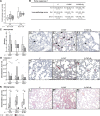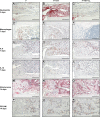Exposure to 100% Oxygen Abolishes the Impairment of Fracture Healing after Thoracic Trauma
- PMID: 26147725
- PMCID: PMC4492600
- DOI: 10.1371/journal.pone.0131194
Exposure to 100% Oxygen Abolishes the Impairment of Fracture Healing after Thoracic Trauma
Abstract
In polytrauma patients a thoracic trauma is one of the most critical injuries and an important trigger of post-traumatic inflammation. About 50% of patients with thoracic trauma are additionally affected by bone fractures. The risk for fracture malunion is considerably increased in such patients, the pathomechanisms being poorly understood. Thoracic trauma causes regional alveolar hypoxia and, subsequently, hypoxemia, which in turn triggers local and systemic inflammation. Therefore, we aimed to unravel the role of oxygen in impaired bone regeneration after thoracic trauma. We hypothesized that short-term breathing of 100% oxygen in the early post-traumatic phase ameliorates inflammation and improves bone regeneration. Mice underwent a femur osteotomy alone or combined with blunt chest trauma 100% oxygen was administered immediately after trauma for two separate 3 hour intervals. Arterial blood gas tensions, microcirculatory perfusion and oxygenation were assessed at 3, 9 and 24 hours after injury. Inflammatory cytokines and markers of oxidative/nitrosative stress were measured in plasma, lung and fracture hematoma. Bone healing was assessed on day 7, 14 and 21. Thoracic trauma induced pulmonary and systemic inflammation and impaired bone healing. Short-term exposure to 100% oxygen in the acute post-traumatic phase significantly attenuated systemic and local inflammatory responses and improved fracture healing without provoking toxic side effects, suggesting that hyperoxia could induce anti-inflammatory and pro-regenerative effects after severe injury. These results suggest that breathing of 100% oxygen in the acute post-traumatic phase might reduce the risk of poorly healing fractures in severely injured patients.
Conflict of interest statement
Figures




References
-
- Lefering R, Paffrath T, Nienaber U. TraumaRegister Annual Report 2013. Deutsche Gesellschaft für Unfallchirurgie (DGU), 2013:29.
-
- Bhandari M, Tornetta P 3rd, Sprague S, Najibi S, Petrisor B, Griffith L, et al. Predictors of reoperation following operative management of fractures of the tibial shaft. Journal of orthopaedic trauma. 2003. May;17(5):353–61. . Epub 2003/05/22. eng. - PubMed
-
- Karladani AH, Granhed H, Karrholm J, Styf J. The influence of fracture etiology and type on fracture healing: a review of 104 consecutive tibial shaft fractures. Archives of orthopaedic and trauma surgery. 2001. June;121(6):325–8. . Epub 2001/08/03. eng. - PubMed
-
- Matzinger P. The danger model: a renewed sense of self. Science. 2002. April 12;296(5566):301–5. . - PubMed
-
- Keel M, Trentz O. Pathophysiology of polytrauma. Injury. 2005. June;36(6):691–709. . - PubMed
Publication types
MeSH terms
Substances
LinkOut - more resources
Full Text Sources
Other Literature Sources
Medical

